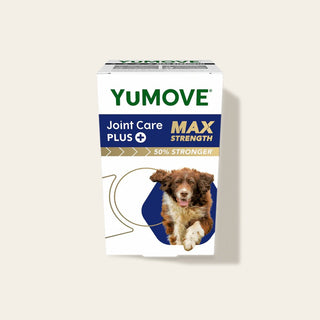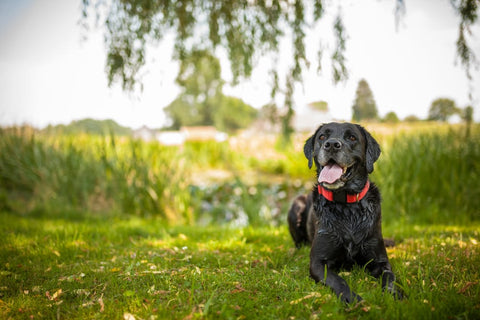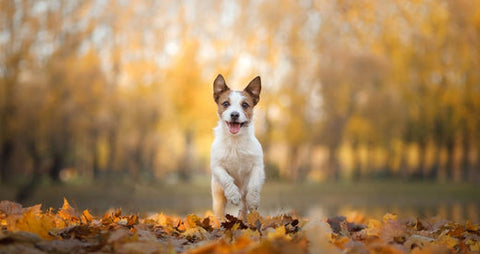

What’s actually happening in the joints with stiffness?
When you’re watching your dog play, jump and zoom around, have you ever stopped to wonder about the mechanics behind their antics? And if they suddenly start taking longer to get up, lag behind on walkies or seem reluctant to head out the door, are you left puzzled as to what’s changed?
Well, ponder no more! We’ve put together a handy guide to demystify the inner workings of your canine companion and suggest how you can help them to keep living their most active.
What’s a joint?
In a nutshell, joints are found throughout your dog’s body wherever two bones meet. Their function is two-fold: to provide motion and flexibility to the skeleton, and to act as shock absorbers. Without them, they simply wouldn’t be able to move! Joints are made up of bones, muscles, ligaments, cartilage and a lubricating fluid, all enveloped within a tough joint capsule.
The synovial (or ‘free-moving’) joints most affected by stiffness in dogs are:
- Shoulder
- Hip
- Knee
- Elbow
- Hock
How does a joint function?
A joint links one bone to another to allow your dog to move where they connect – think of how a hinge connects a door to a wall. For the bones to stay flexible, the joints are well oiled thanks to synovial fluid, a sticky substance that washes around the joint. What’s more, slippery tissue known as cartilage cushions the ends of the bones in the joints, allowing them to glide past each other when moving around.
What changes when a joint becomes stiff?
When a dog’s joint is no longer in peak condition, there’s a whole different scenario going on beneath their fur:
- Cartilage becomes thinner, worn and uneven. Pieces may break off
- The joint capsule becomes inflamed. Over time it can become toughened and stiff
- The synovial fluid changes in consistency, becoming thinner and less lubricating
In short, the smooth sliding motion of the joint is lost. Every time your pup moves their joints, the cartilage grinds together, causing swelling and, in turn, difficulties moving as freely as before. The cartilage can become so worn that the bone underneath becomes damaged.
It could well be that your dog’s joints changes come about because of ageing – after all, it comes to us all! However, some breeds are more prone to stiffness than others and may experience symptoms at an earlier point in their lives.
Another reason for joint stiffness in your dog could be down to a bacterial infection, which leads to painful swelling in one or more joints. Again, larger breeds tend to be most affected by this.
Signs of stiffness
Is your dog taking longer than usual to do your standard circuit round the woods, or is there reluctance to even make it out the door? Have they stopped bounding up the stairs to greet you first thing, or are they taking a while to haul themselves up after their morning snooze? These are all tell-tale signs your dog isn’t feeling as supple as they once did.
Here are some signs to look out for in your dog:
- Excessively licking joints
- Lagging behind on walks
- Slow to rise from rest
- Struggling to get into the car or onto the sofa
- Lethargy
- A generally low mood
- Sensitivity when being touched or stroked
If you are worried about your dog’s mobility, take a look at our joint supplements for dogs.




